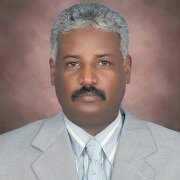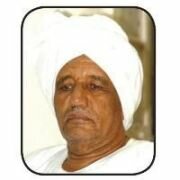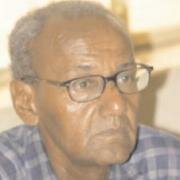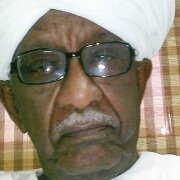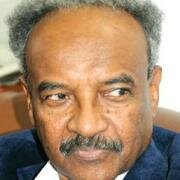We watched Ali romp with his younger siblings, he tussling with and tickling them, they leaping on him with shrieks of laughter
. It would have been easy to miss the shadow that crossed his face when he spoke about how frightened he had been, locked up without his mother. Evidence of trauma was hardly borne by this boy alone. I saw it when a male medical worker broke down weeping as he described what he had witnessed at Salmaniya hospital during the crackdown on Pearl Roundabout.
I heard it in the voice of Dr. Nabeel Hameed, one of the doctors arrested and tortured by the regime, as he described his struggles with depression, anger, and confusion since his release, and detected it in Dr. Zahra Alsammak’s flat affect when she declined to describe the torture that her husband, also a doctor, had endured. I recognized it in the crayon drawings by the children of prisoners and “martyred” protesters, replete with gun-wielding police, tanks, stick figures behind bars, and bodies on stretchers. I felt it in the mother of Ali Jawad Al-Sheikh, as she buried her face in a pile of her son’s t-shirts and breathed in their scent, as she has done every night since 14-year-old Ali was killed. “There has been a lot of damage and hurt, the people won’t forget it very soon,” Jihan told me. “Even if we got our freedom tomorrow, the people need time to be healed.”
If the regime did not institute “true reforms,” and soon -- which I saw no indication of -- Jihan predicted that the government would soon be facing a more aggressive generation. “We don’t want that,” she said forcefully. “We started peacefully and we want to stay peaceful… We are trying our best to advise [the youth] not to hold these Molotov cocktails. But, at the end, I think if the violence [against them] increases, it will be very difficult to control them.”
The impact of the trauma does not escape the activists. Jihan described documenting the killing of Ahmed Ismail Hassan, a 22-year old citizen-journalist shot in the lower abdomen by live ammunition as he was filming a protest. Jihan had never seen so much blood. For two days, the smell of blood in her nostrils prevented her from eating and for two nights she could not close her eyes.
“Every day we’re documenting and seeing these violations, so we’re under a lot of pressure. In the end, we are human beings. We get affected, we get hurt. The leaders and the human rights activists, we can’t show the people that we’re affected and broken from inside. If the people see that we are collapsed internally, what kind of strength will they get from us? Sometimes I get broken from inside, I disappear for a few days, but I try my best to fight depression. I try to keep busy and not think about it.”
I asked Jihan about the possibility of her own arrest. “I think that they will target me very soon,” she said. “At any time they might raid my home and arrest me.” She fears most the possibility of torture. She’s documented enough cases to know just what she might be forced to endure. But she adds, “I do believe that getting freedom and democracy for the coming generation is very important, and highlighting the violations that are happening in the country is very important. Freedom is not something easy to get -- we have to pay and to sacrifice for it. Fear of arrest won’t stop me from doing my humanitarian job. I won’t give up.”
Jihan’s fellow Bahraini activists are not giving up either. They continue to head out onto the streets night after night, despite the fierce repression they face from the regime and the silent complicity of most of the world. Yet there is reason to worry about where the Bahraini uprising is heading. As Dr. Nabeel Hameed put it, “The situation is getting entrenched, it’s getting stagnated. Nobody sees a solution, and this gives loss of hope. And one of the most dangerous positions you can put a human being in is loss of hope. Because when somebody loses hope, he’s capable of doing anything.”
Juxtaposed with despair, however, is the resilience -- or sumud (steadfastness) -- that could be seen everywhere I looked. It was in the drawings of the children, who defiantly portrayed hands raised in a “V” for victory sign among images of bloodshed. It was in the graffiti depicting the Pearl Monument on walls all over Bahrain, with the stenciled message “We Will Return.” It was in the youth we secretly filmed in their villages after midnight spray-painting bus stops and light poles with the colors of the Bahraini flag. And it was reflected in 13-year old Hussein, who called Jihan two days after being stitched back together without anesthesia to report, to her great relief, that his vomiting had ceased and his appetite had returned. Hussein tried to thank Jihan for her help, but she would not permit it. “No need to say thanks, habibi [my dear]. I’m only doing my duty.” Modified from Tomdispatch
-
On The Aftermath
-
2018 Budget for Economical Stability and Poverty ReductionNext >
